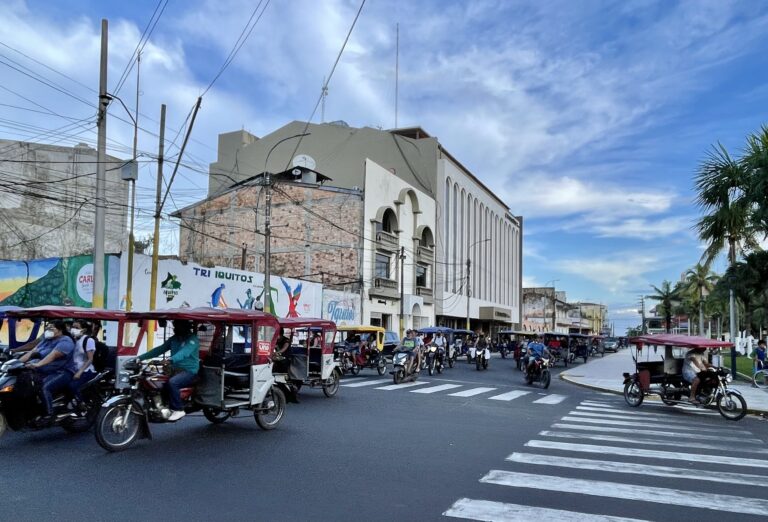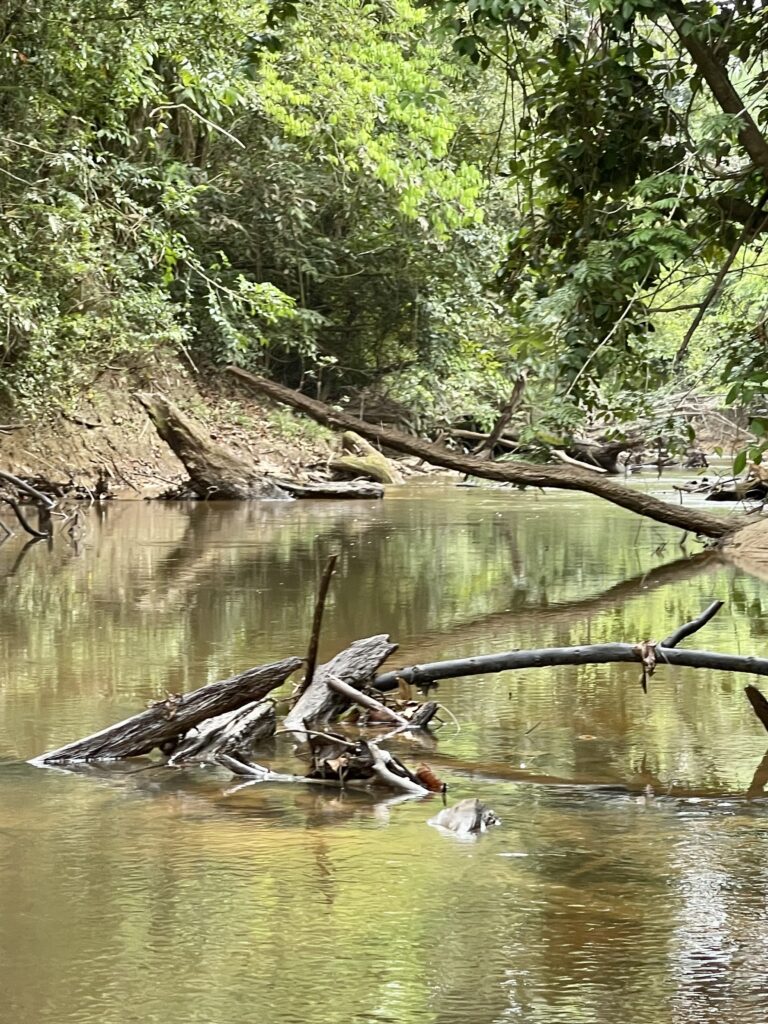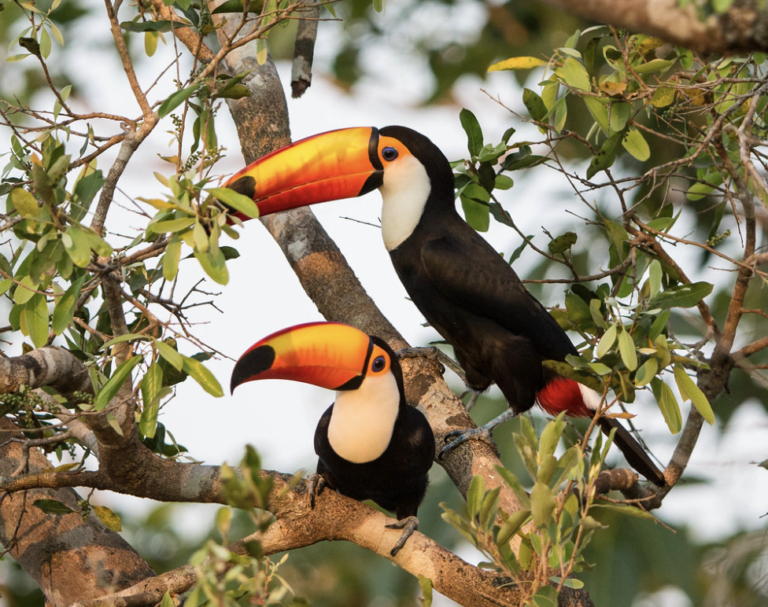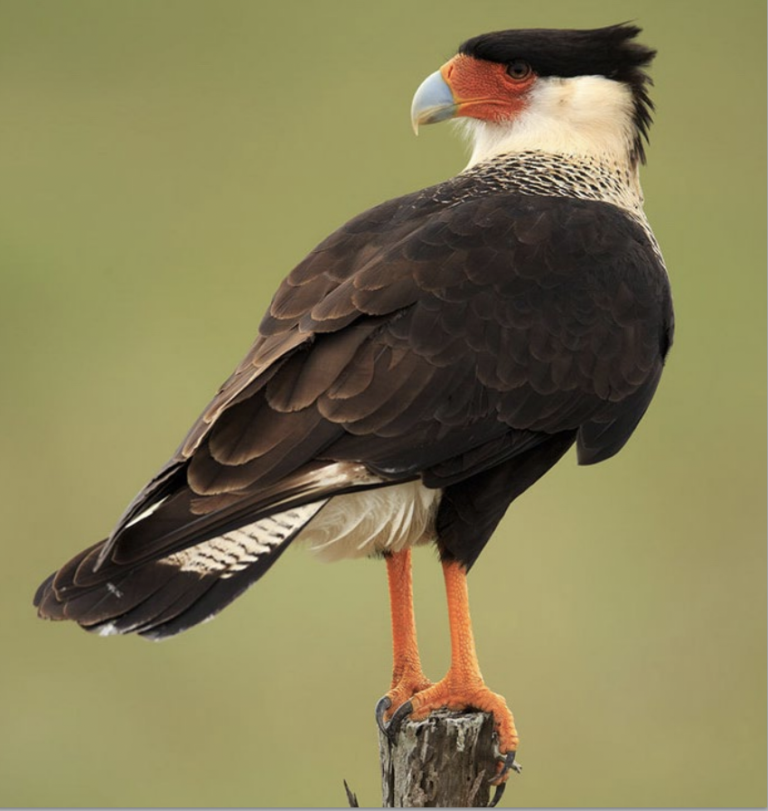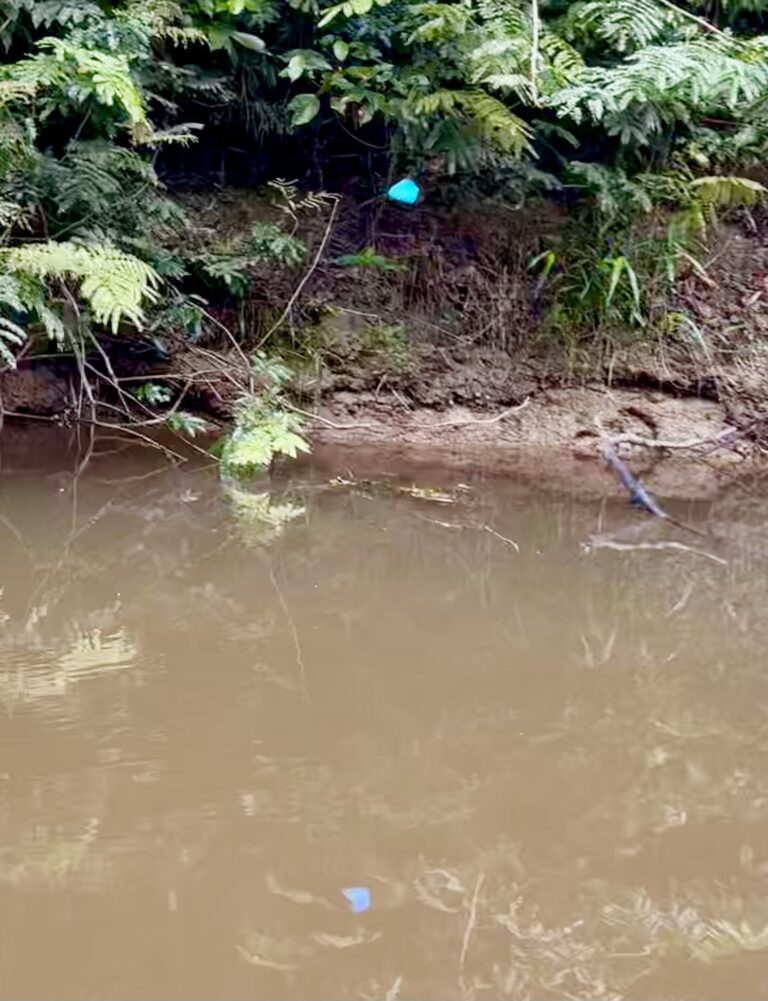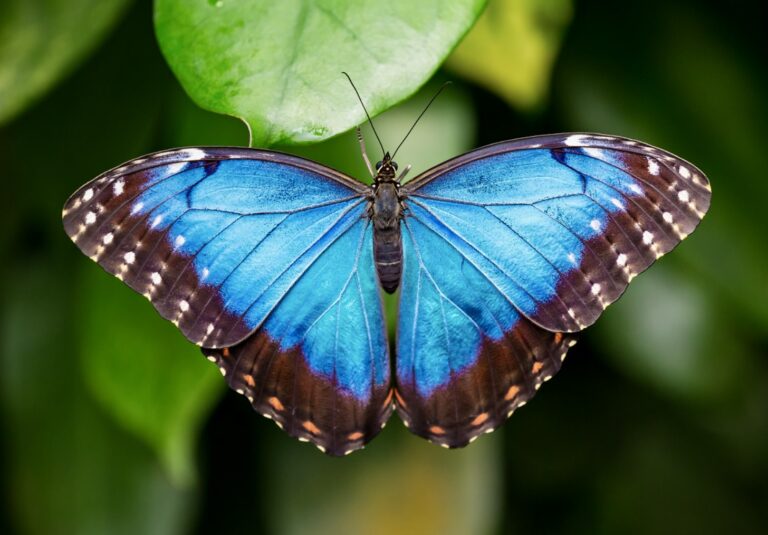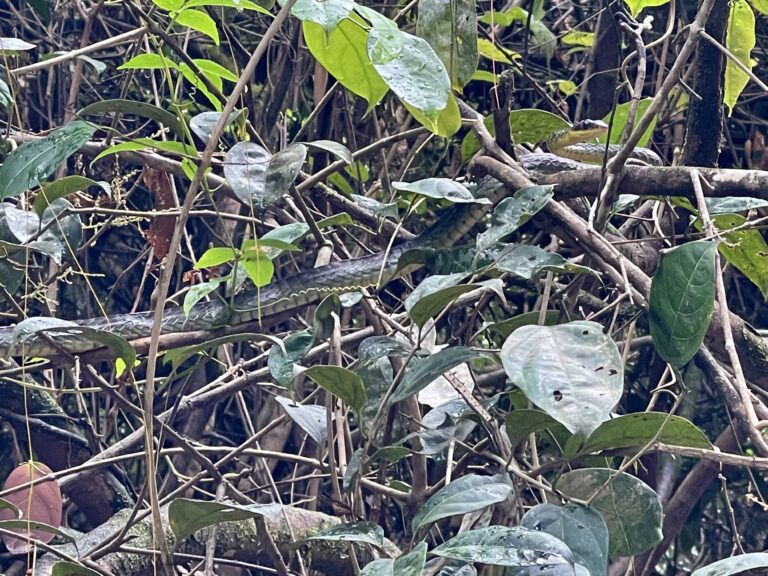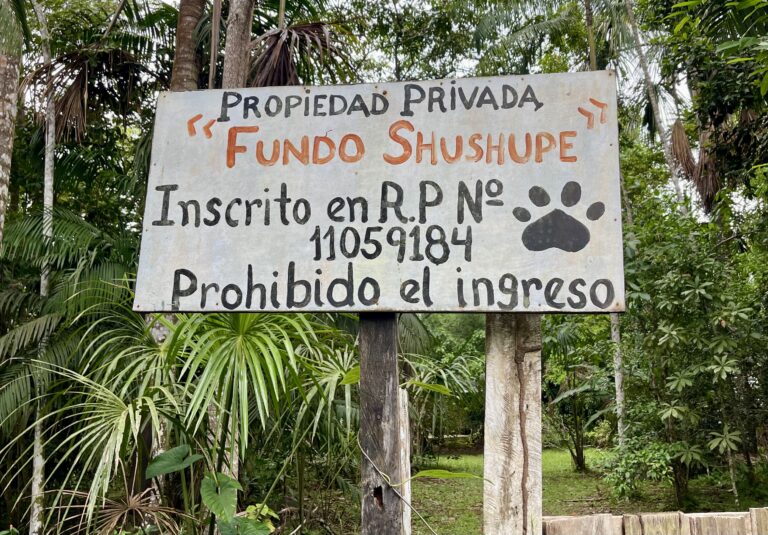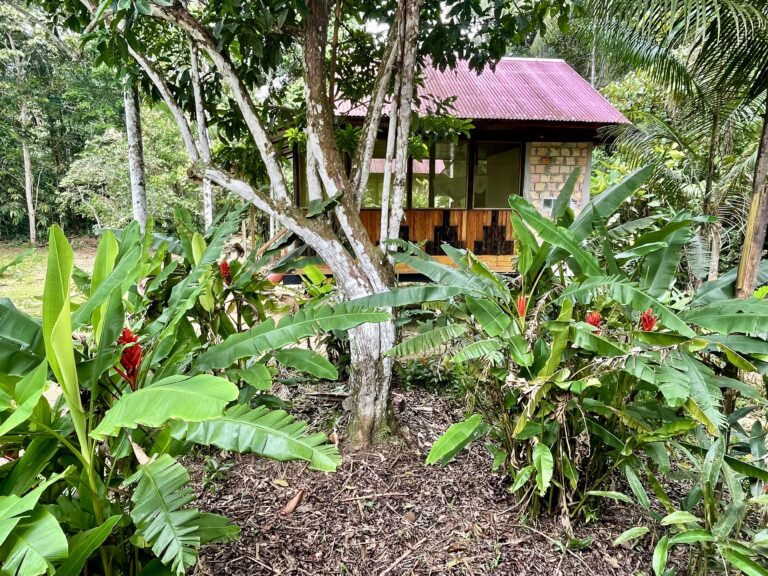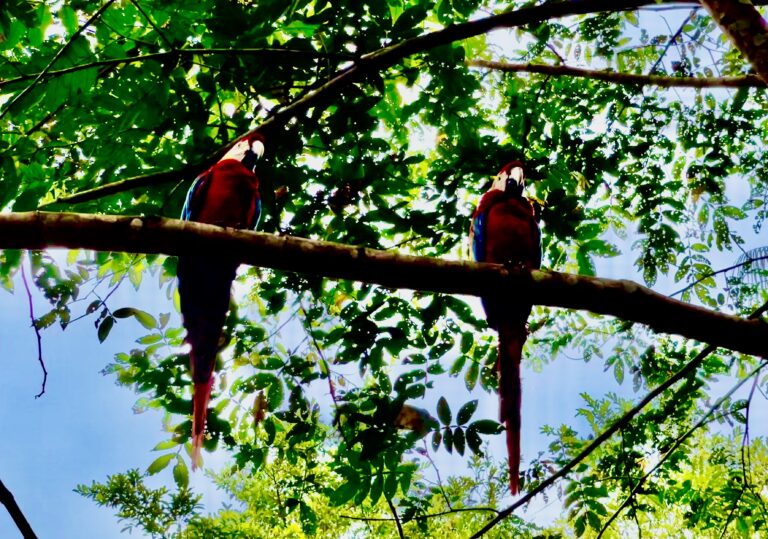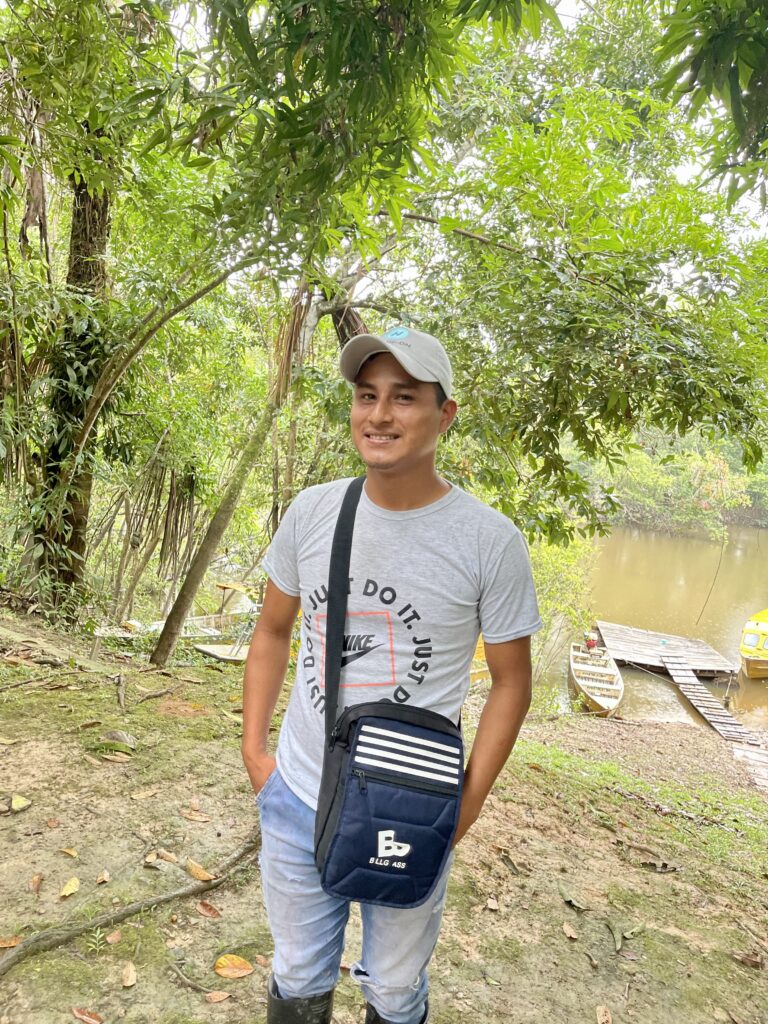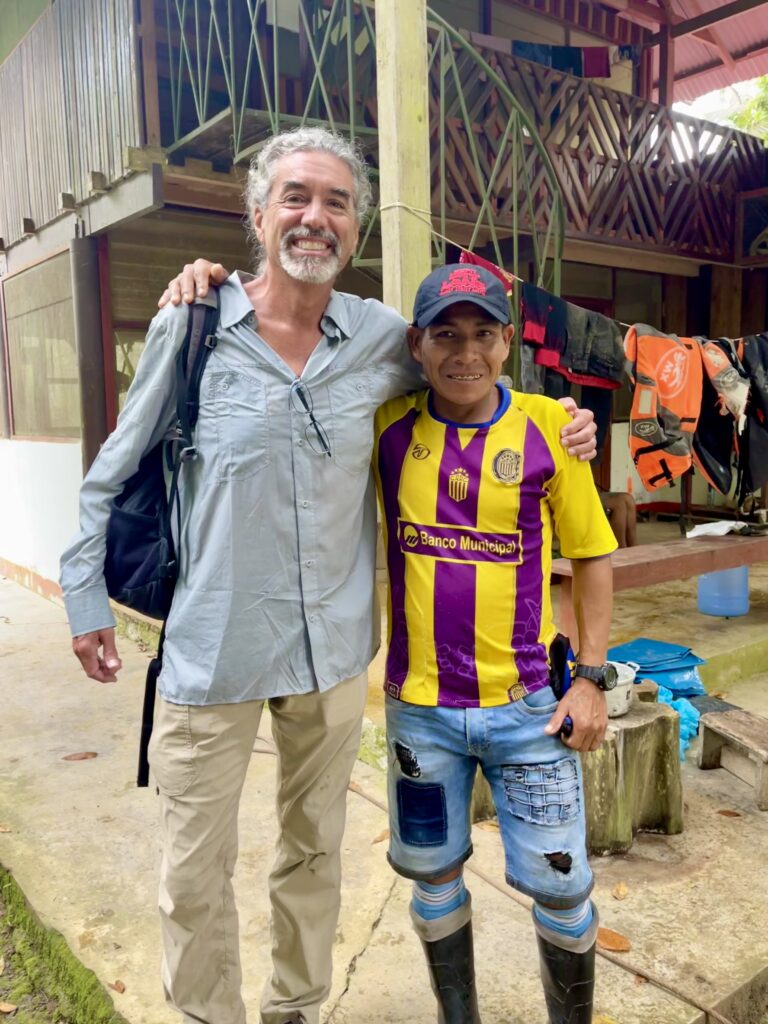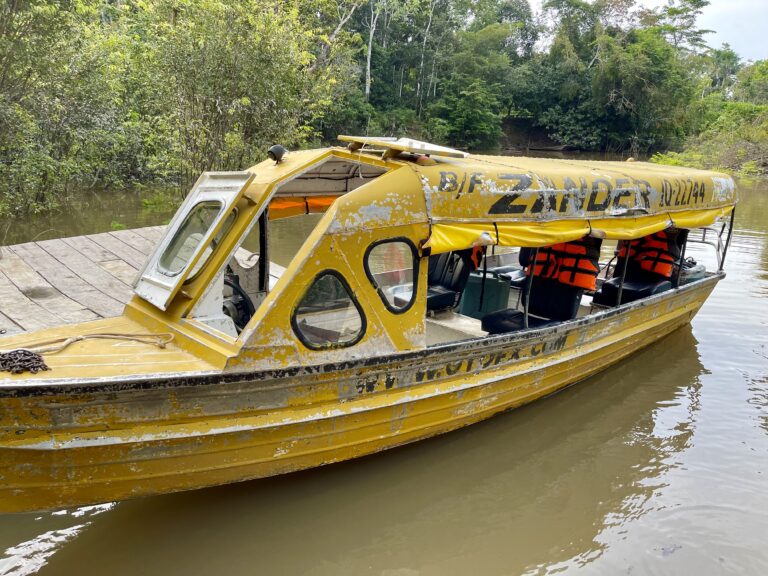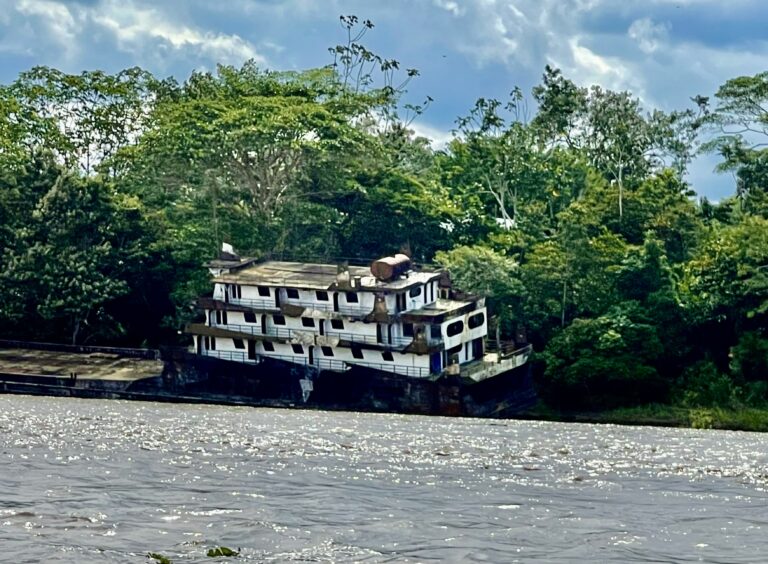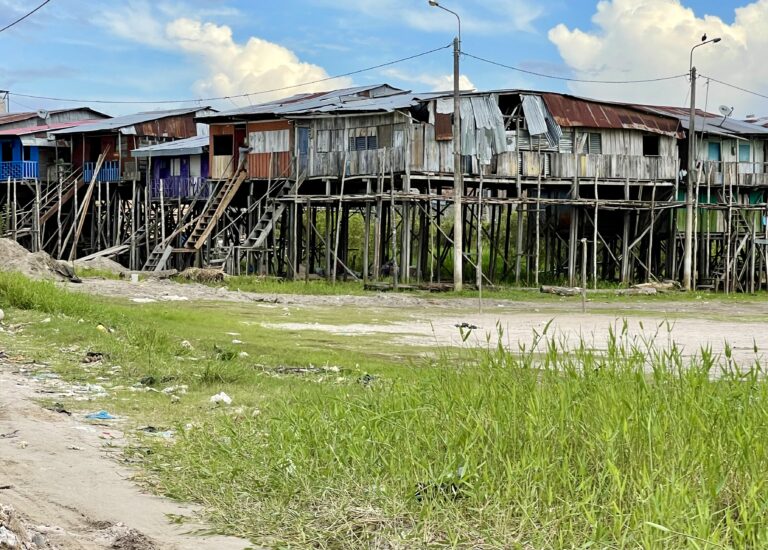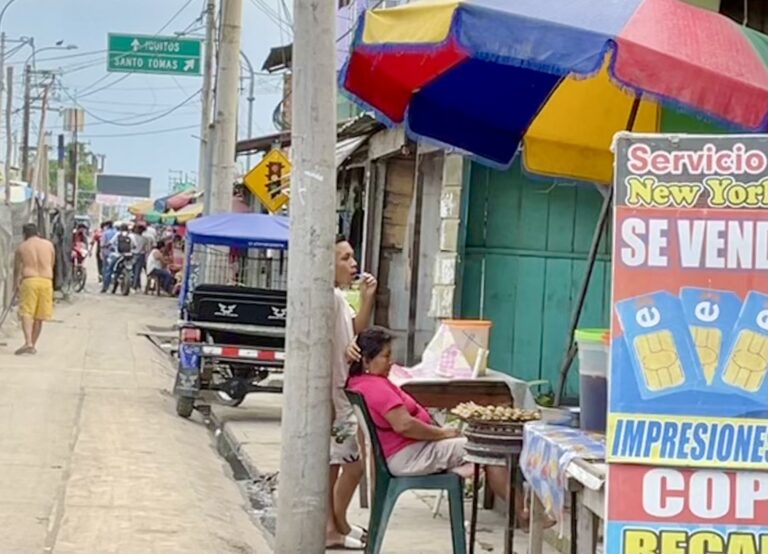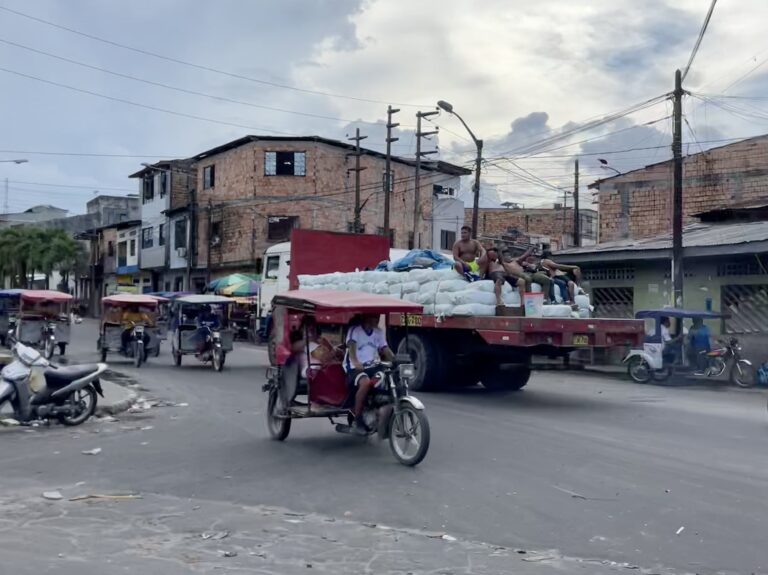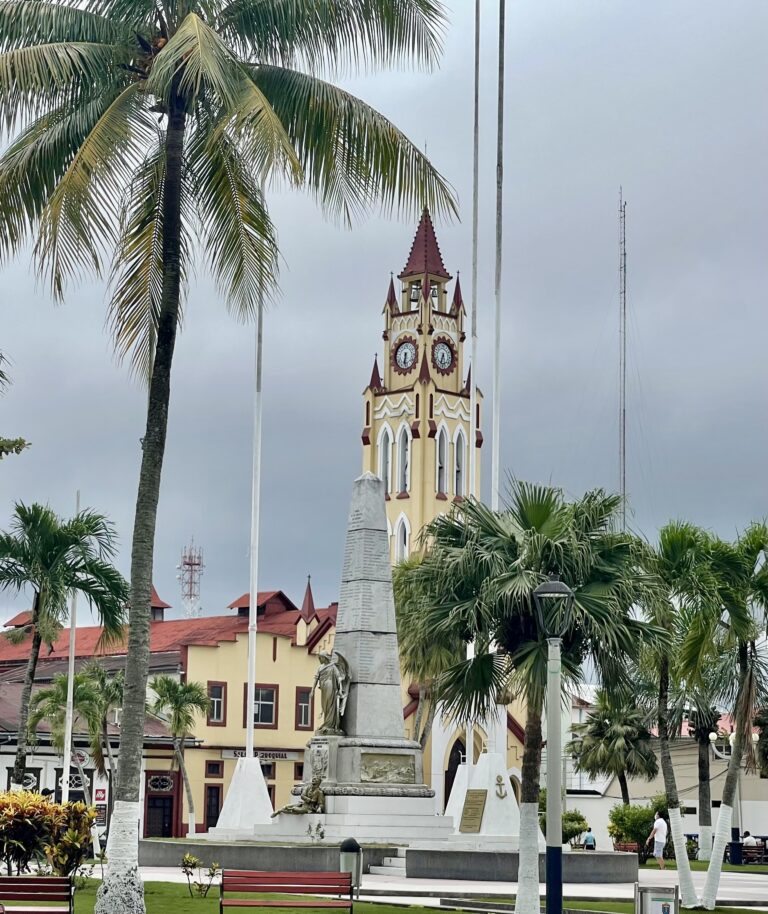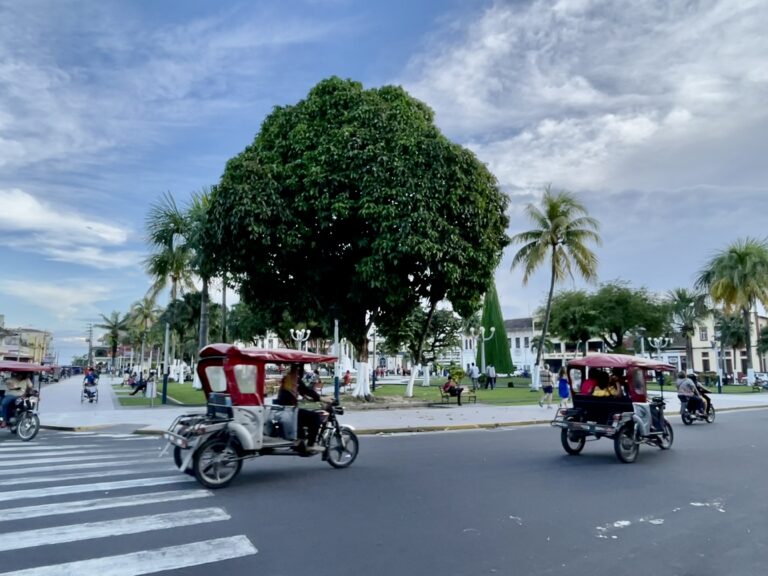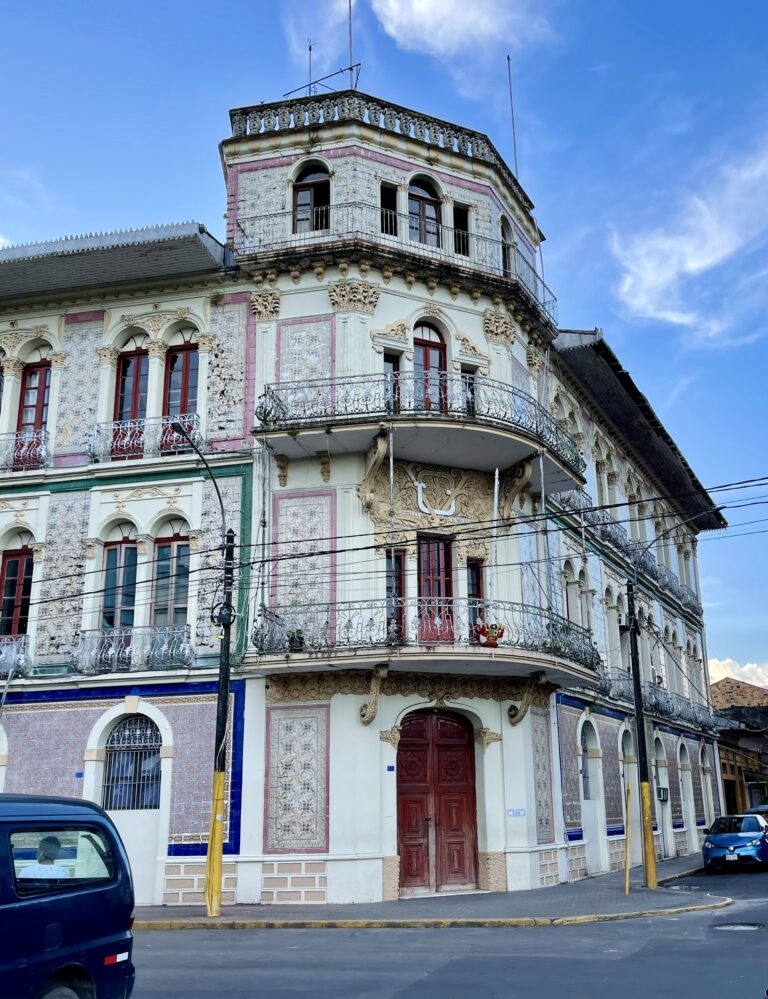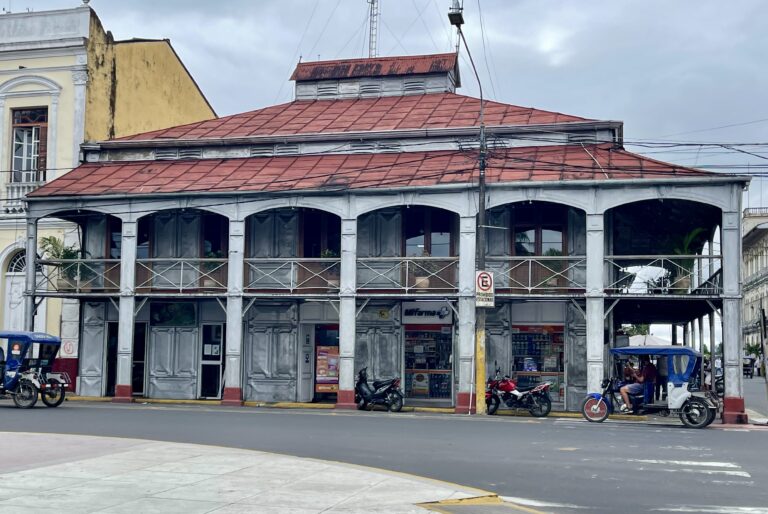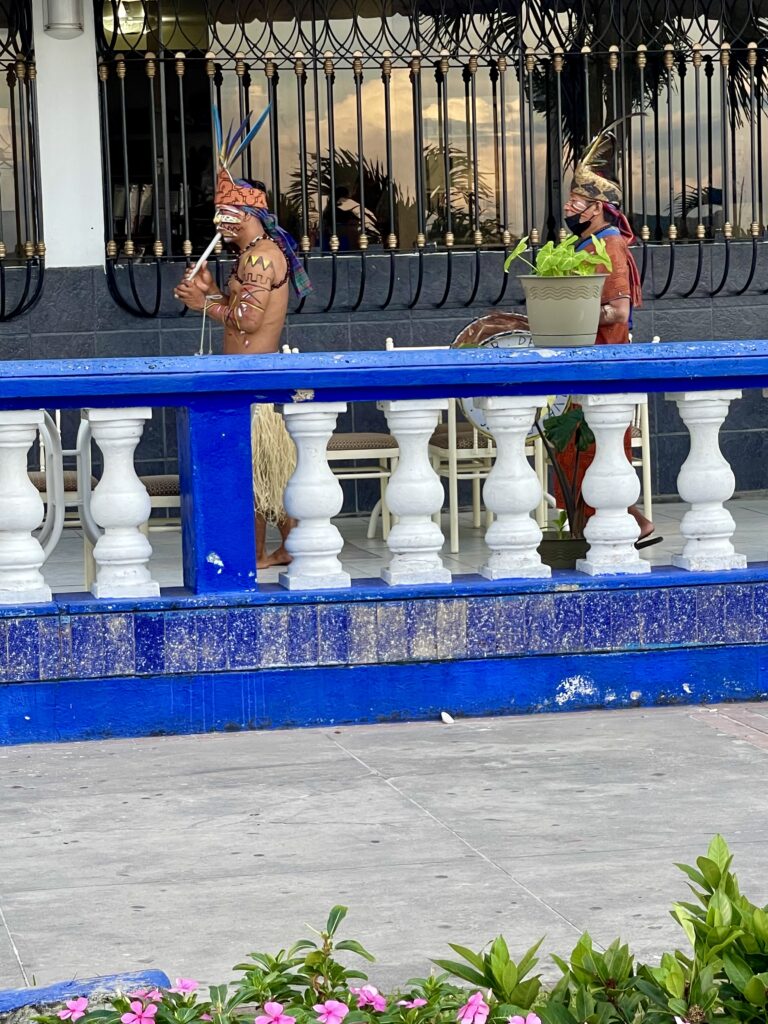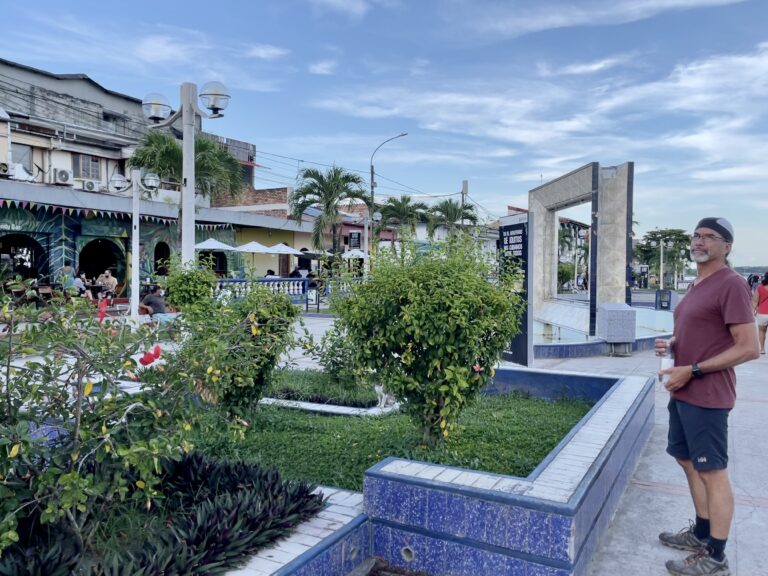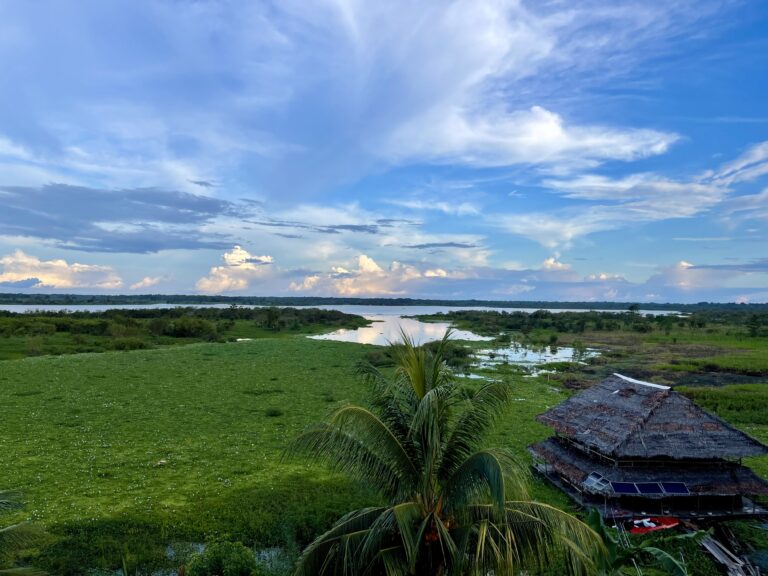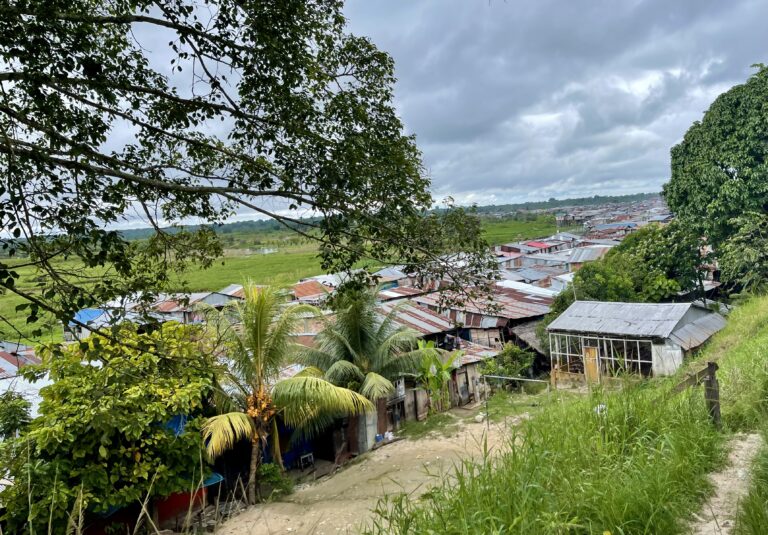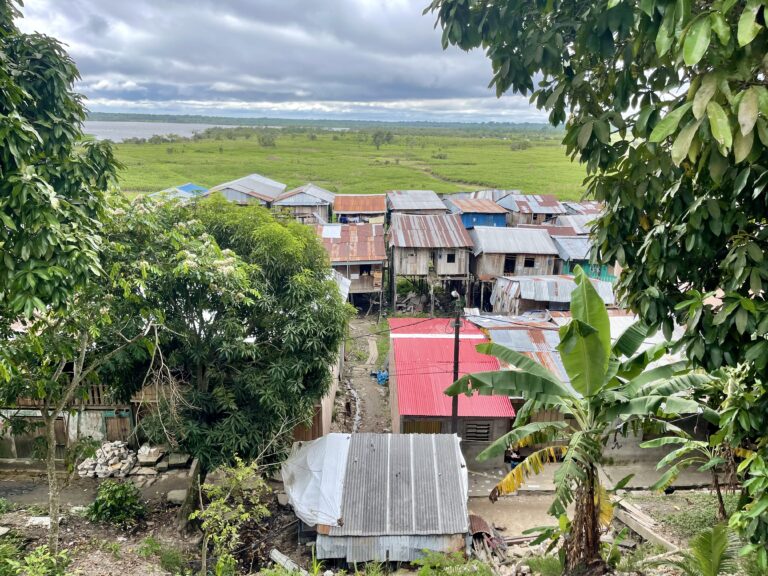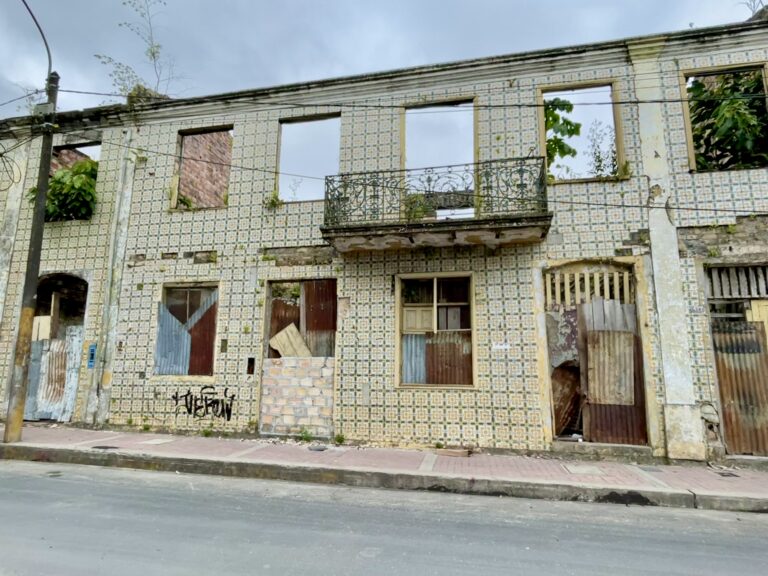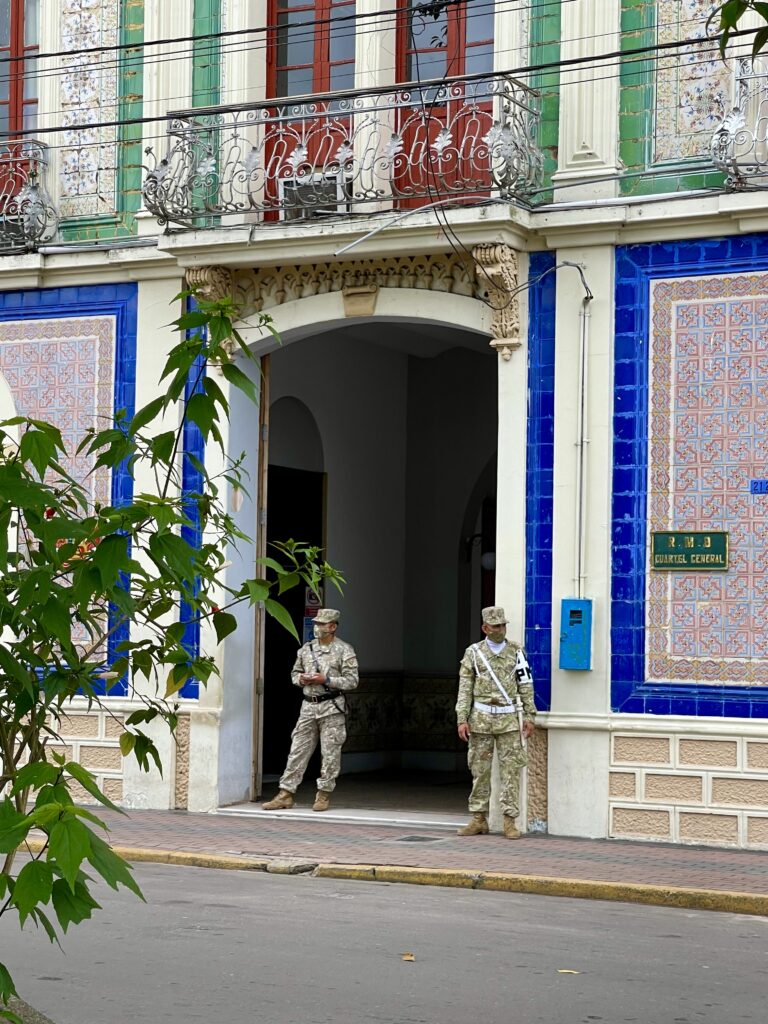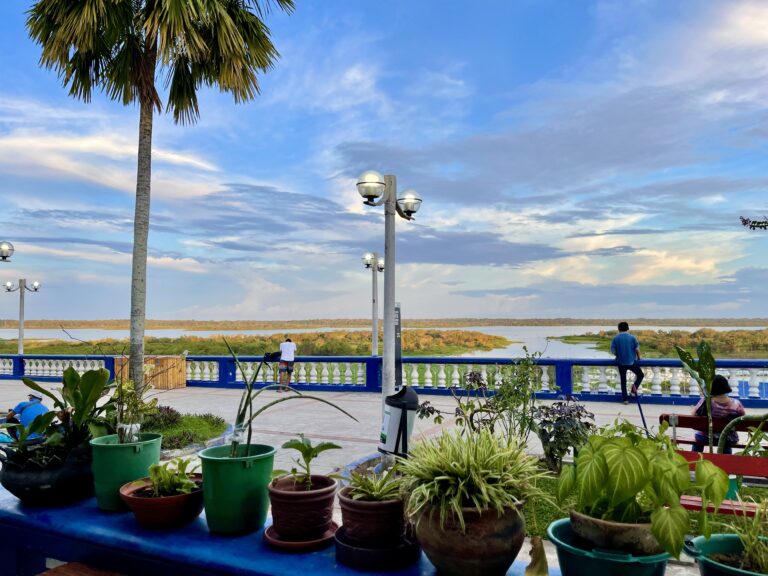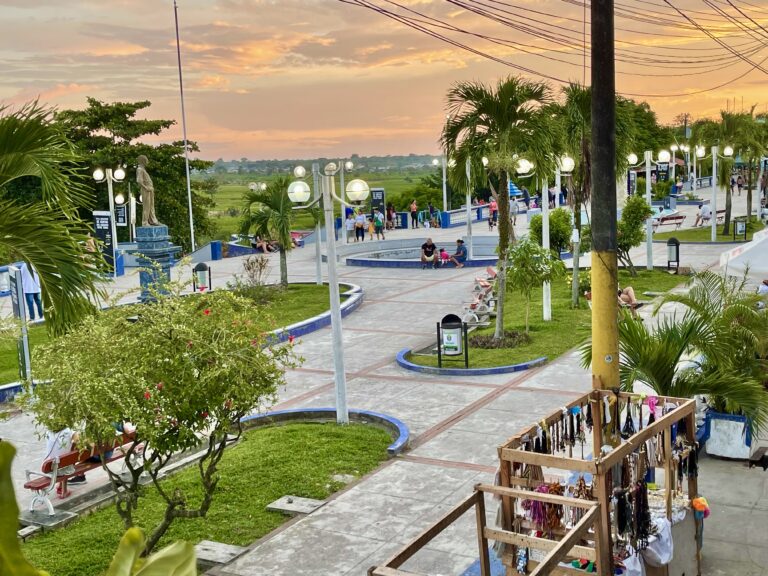February 4, 2022
It dawned cloudy again and at sunrise we could hear thousands of bees swarming the nearby wild fruit trees while parrots and other unseen birds called. Today would be our last day at the lodge and after lunch, we’d take the larger boat that brought us here back to Iquitos, a two-and-a-half-hour ride, this time against the two-knot current.
After breakfast, we climbed into the pecky-pecky and slowly motored up the creek in search of more wildlife, the creek water dark with tannins, unlike the silty Amazon.
Along the way, Jón pointed out a pair of toucans (finally!) as well as a beautiful blue-beaked caracara falcon—their calls sound like “cara cara.” The exotic birds were too high in the trees to capture decent photos.
Then Jón somehow spotted a venomous black whip snake in a bush from 25 feet away that we couldn’t see until it was five feet in front of us.
The lodge’s version of a “Keep Out” sign warned of the highly venomous Amazon bushmaster snakes living in the area, which we never saw, but at least (probably for the better) we’d now seen the black whip.
Our adventure at the lodge had come to an end. After an early lunch, we got our cleaned clothes back. As expected, they were still mostly wet so we put them in plastic bags inside our suitcases and figured we find a way to dry them later.
We gave baseball caps we’d brought as small gifts for our guides (along with tips) and they both put them on. Then it was time to say goodbye to Saul. Jón would be escorting us back to Iquitos where he lived when not giving jungle tours.
We loaded back up into the larger boat, with Manuel as our captain again, and headed upriver for the trip back to Iquitos. The engine quit a mile out but Manuel got it started and assured us all was well. I asked Jón what they did if a boat broke down. He shrugged and said they’d hail a passing boat who, like sailors the world over, were always ready to help, or we’d eventually float to a village.
When we docked in Iquitos we were immediately immersed in the poverty, chaos, and heat that characterize the city of half a million people, accessible only by boat or airplane. We got in two waiting tuk tuks (one could not hold the three of us and our luggage) Jón had pre-arranged and headed to our hotel room in town.
There were people everywhere—along the sides (and sometimes in the middle) of the road and even stretched out on top of a huge load in a truck bed. The streets along the way were simply crazy—we were still on the shores of the Amazon jungle but now we were definitely in an urban jungle as well.
Hundreds of tuk tuks and motorcycles vied for every inch of the road as fast as they could go, passing on both sides, into traffic, whatever it took. Traffic lights were mere suggestions and the road was pockmarked with huge potholes and missing giant pieces of asphalt. I noticed that, unlike in Colombia, motorcyclists didn’t have to wear helmets in Peru—but they did wear masks. The tuk tuk we rode in had no suspension and the motion was crazy and the noise and smells were overwhelming. It felt like being inserted into a 20-minute amusement park ride.
Our hotel was just off the noisy main road and near the town square and waterfront but was surprisingly quiet and clean—and had hot water and air conditioning! We said our final goodbyes to our intrepid guide as we checked in, then hung our wet clothes all over the room in hopes they’d dry by morning.
Near the square, we passed several large, ostentatious buildings. We learned that they’d been built by rubber barons in the late 19th and early 20th centuries. During that period, rubber suddenly was in huge demand due to the explosive growth of automobiles and the jungle near Iquitos was one of the main places for harvesting rubber. Rubber barons accumulated vast wealth quickly and built their massive homes close to the river. Most of the buildings were now in various states of disrepair and some even had plants growing through the roof.
One metal building, known as the Iron House (Casa de Fierro), had been designed by Gustave Eiffel, of Eiffel Tower fame. It was made in Paris in 1860 and imported piece by piece into Iquitos around 1890 and is known to be the first prefab house in the Americas. How the house was transported from Paris to Iquitos is somewhat of a mystery, given that there are no roads to Iquitos. Apparently, the transport of such heavy materials involved hundreds of men carrying the materials through the Amazon jungle. Though built in an attempt to beautify Iquitos we thought the Iron House looked like a bunch of scrap-metal sheets bolted together. Eiffel should have stuck to towers.
There were restaurants, costumed performers, a few vendors selling souvenirs, a beautiful but non-working fountain and hawkers trying to sell us Amazon jungle tours that may have been similar to the one we’d just wrapped up. But after just a few blocks, the malecón continued into a pretty rundown part of town.
On the water side there was a large shanty town built on stilts for when the high water came. Like Oran, it was another sobering reminder of the extreme poverty of so many who live along the Amazon and the incredible privilege we experience at home.
On the other side, there was a mix of functioning buildings and completely dilapidated ones. There was a large police presence we wondered about though we didn’t feel unsafe and employ safe practices as travelers anyway (remain aware of our surroundings, no flashy clothes or jewelry, carry little cash, etc.).
It was getting late so we found a place to get something to eat, on a funky balcony overlooking the water and the malecon. We’d been fed so much so often at the lodge that we were happy to share a small dinner and a Cristal, a very good Peruvian beer, while we watched the sun go down.

